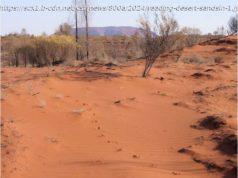Bank Collapse: Some Wall Street strategists were skeptical that such a facility would actually address any strains, and the most recent Senior Financial Officer survey showed SRF was rated the second to least likely to be used, next to the discount window.
Investors are zeroing in on key parts of the market for short-term dollar borrowing to determine if and how signs of systemic stress might be emerging after the biggest US bank collapse in over a decade. The failure of Silicon Valley Bank has stirred concern additional banks might also be in danger of a funding shortfall. Yet while the stocks of a number of purportedly at-risk firms such as First Republic Bank and Western Alliance Bancorp have taken a record beating and there have been some notable movements in parts of funding markets, the broader system appears to be holding firm for now.That may change though. Here are some of the funding-market indicators to look at for potential signs of pressure and areas to be contemplating for possible knock-on effects.The New BackstopThis past weekend saw US authorities introduce a new backstop for banks that Fed officials said was big enough to protect the entire nation’s deposits. The Bank Term Funding Program allows banks to monetize their underwater hold-to-maturity portfolio without creating losses because it will provide funding for par value of securities pledged.Borrowing from the emergency bank facility will be disclosed weekly in the Fed’s regular balance sheet update, but individual borrowers won’t be named for two years. Usage of the Bank Term Funding Program will be published every Thursday. Money-market watchers and bank investors will be monitoring closely in the coming weeks to see what the take-up is like, and what that might mean for the system.The facility will offer one-year term funding at 10 basis points over the one-year overnight index swap rate, which, according to Wrightson ICAP, is cheaper than what’s offered by Federal Home Loan Banks, another key source of funding for lenders. If banks migrate to the central bank facility, demand for FHLB advances may dwindle. Conversely, it’s yet to be seen if participants regard this new facility as having a stigma, despite the relatively advantageous terms it offers.The Discount WindowOne facility that is often said to carry a stigma is the Fed’s so-called discount window. Like the new backstop it offers term funding, but for a shorter period, providing dollars for up to 90 days. Unlike the new facility, the cash that borrowers have historically gotten is less than 100% of the collateral they put up. This so-called haircut is imposed by the Fed to insure itself against risk. As part of its most recent measures, the Fed has also eased terms on the window, although the reputational impact associated with it is likely to persist.At the end of 2022, balances at the Fed’s discount window, normally a last-resort funding source, had already risen to the highest level since June 2020. Combined with an increase in US banks’ borrowings through other channels, that suggested the deposit loss was accelerating. Demand did retreat after that, but there’s a chance usage has since rebounded on the back of regional bank strains, and all eyes will be on whether that’s the case.






